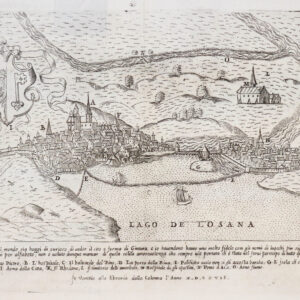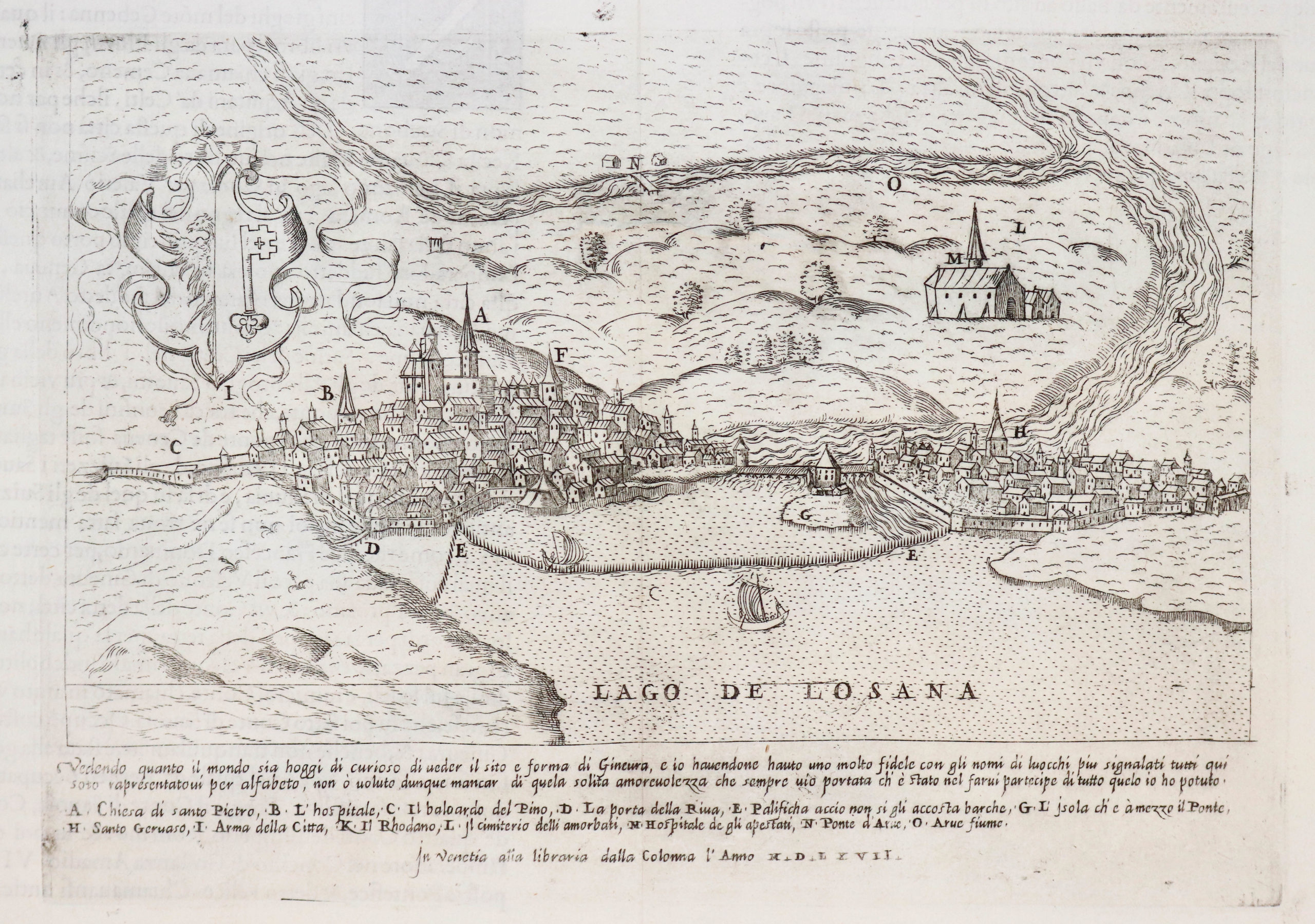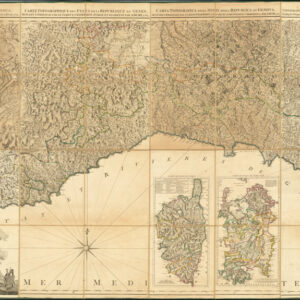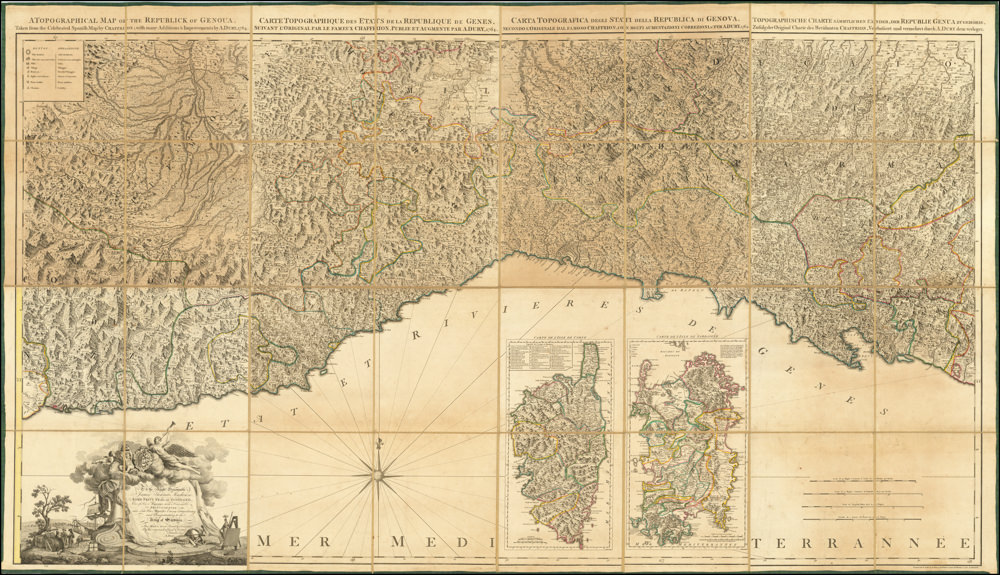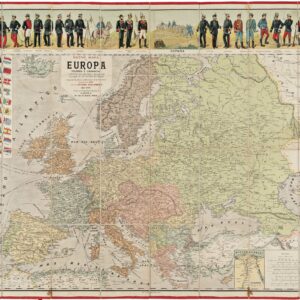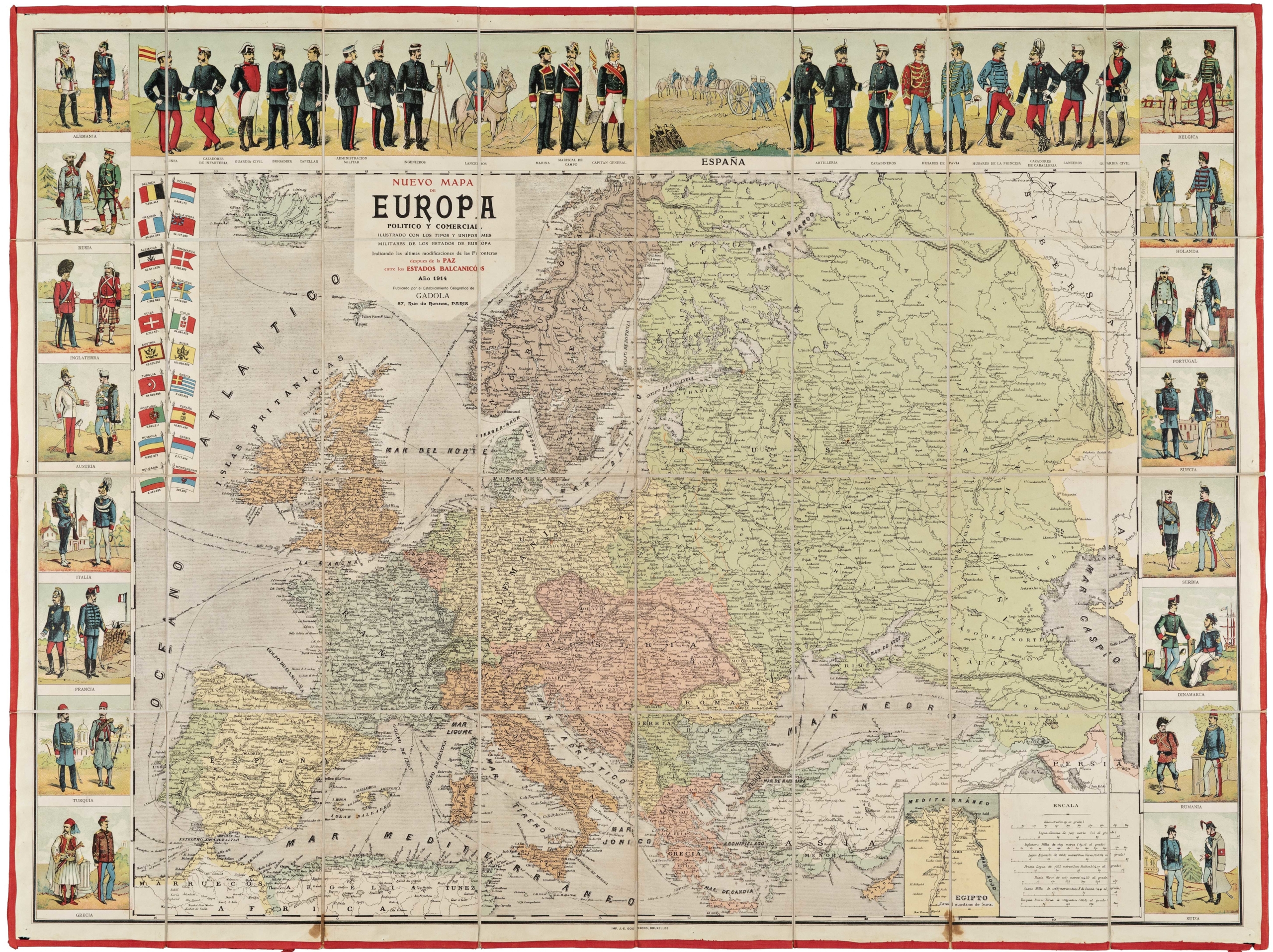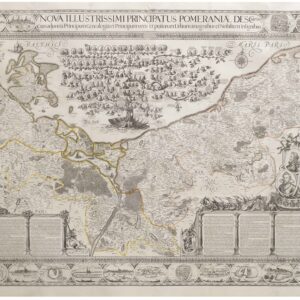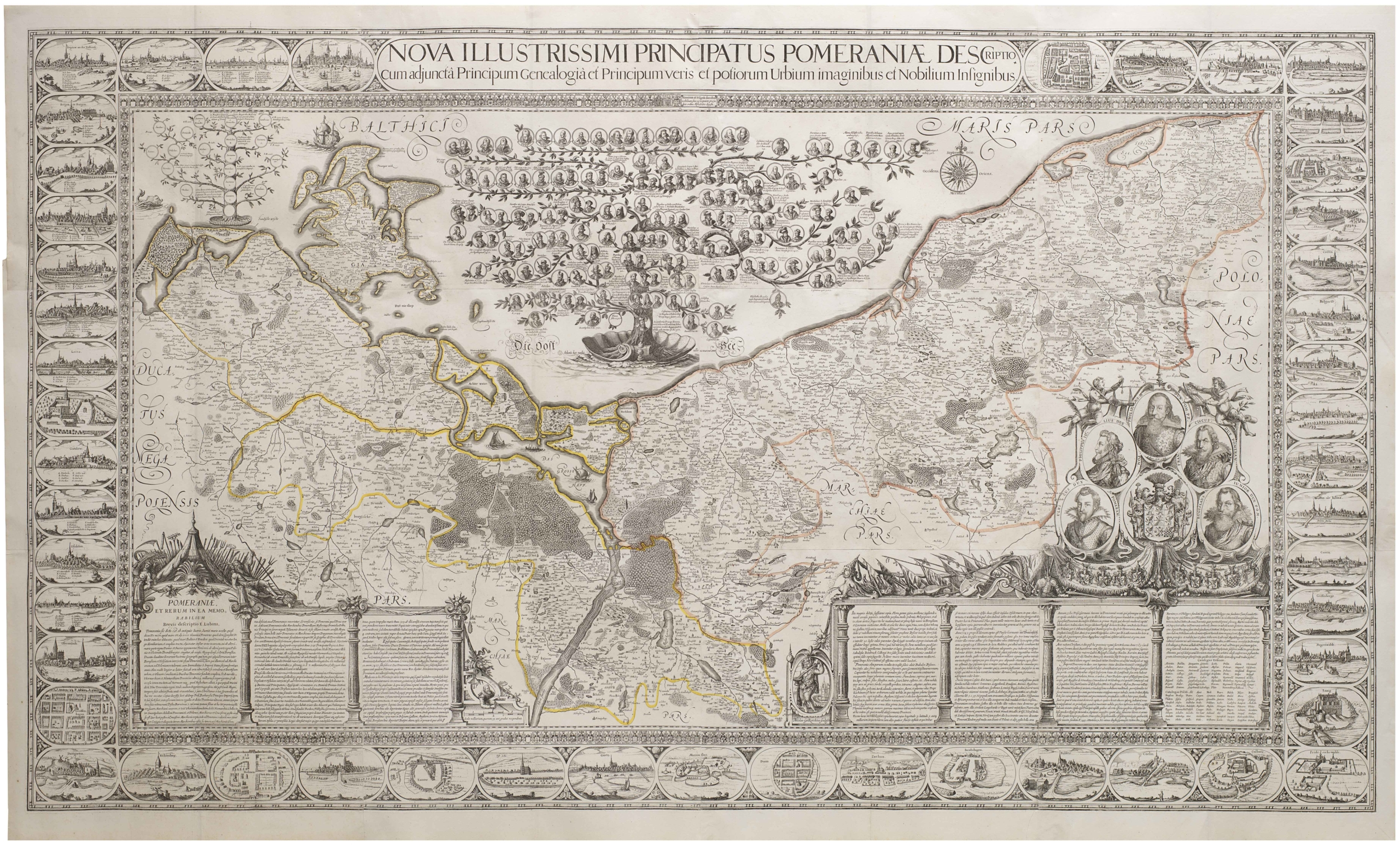Ortelius’s pioneering of map of Sicily in Antiquity with excellent old color.
Siciliae Veteris Typus.
$1,400
1 in stock
Description
This gorgeous example of Abraham Ortelius’s Siciliae Veteris Typus (“Map of Ancient Sicily”) was issued in the 1601 Latin edition of the iconic Theatrum Orbis Terrarum, printed by Jan Baptist Vrients for the Plantin Press in Antwerp. While the Theatrum constituted the first modern atlas, not all the maps were designed to show contemporary geography. In this case, Ortelius’s map depicts Sicily as it was known in Antiquity. Consequently, many toponyms and annotations pertain to an ancient geography and the associated mythology.
The island’s outline is rendered with remarkable fidelity to its true form, delineating the triangular silhouette of Sicily with careful attention to its promontories and three prominent capes: Capo Peloro (Messina) to the northeast, Capo Passero to the south, and Capo Boeo (Marsala) to the west. Just inland from Catania, we find Sicily’s famous volcano, Mount Etna, labeled MONS AETNÆ and poetically described as the “Pillar of Heaven” (Celestis Colunna Pindaro). Other prominent inland features include the central Lacus Pergus, noted as the “Navel of Sicily” (umbilicus Sicilae) and the location from which the Roman god Pluto (Greek Hades) kidnapped the beautiful Proserpina (Hic Proserpinam a Plutone raptam ferunt), daughter of Ceres (Greek Demeter) and Jupiter (Greek Zeus). Major rivers such as the Himera, Hÿpsa, and Torias extend from the central highlands to the surrounding sea, underlining the island’s historical role as a breadbasket. Lipari and the Aegadian Islands are carefully positioned to the north and west, underscoring Sicily’s maritime connections with the rest of the Mediterranean Basin.
The island is divided into distinct regions, although these remain undelineated by boundary lines. The inclusion of Sicania Regio in the south and Elymi in the north-west is worth noting. These regional toponyms stem from the oldest known subdivision of the island. Along with a third region in the east (Siculus) – which is not included on this map – this was the subdivision used by Greek and Roman rulers, but the origins may date as far back as the Late Bronze Age (c. 1500-1200 BCE). The toponymy also draws heavily on classical sources, with Palermo listed as Panormus, Syracuse as Syracusae, Marsala as Lilybaeum, and Taormina as Tauromenium. Ortelius’s scholarship is evident from his selective inclusion of historically significant towns, such as Agrigentum (Agrigento) and Selinus (Selinunte), while historically less notable settlements have been omitted.
The verso of the sheet bears a descriptive text in Latin providing concise geographical and historical notes on the island and its principal cities.
Decorative and Stylistic Elements
The present engraving showcases Ortelius’ visual clarity. Coastlines are sharply incised, hachures and shading indicate mountains, and rivers are rendered as delicate double lines. Place‑name lettering alternates between Roman capitals for major sites and italic script for lesser locales, lending the sheet both hierarchical legibility and aesthetic balance.
The map is framed by a neatline border, embellished with a central title cartouche crowning the island and festooned with classical garlands. On the lower left, a second cartouche lists the principal ancient sites in Sicily. Several finely engraved galleons and sea monsters are scattered across the surrounding waters, serving decorative and didactic purposes, indicating the perils of maritime navigation in antiquity.
In the upper left corner is an inset plan of ancient Syracuse, enclosed within an elaborate strapwork frame. This view includes the urban island of Ortigia, home to the celebrated Fountain of Arethusa, which Ortelius has depicted as a circular pool fed by a spring. Other urban features include the city walls, amphitheatre, and the quays of the Great Harbour, all of which have been rendered with details that can only have come from classical authors (e.g. Thucydides’s descriptions of the fortifications and Virgil’s mention of the fountain). In this sense, the Syracuse inset is an experimental cartography that blends historical description with scholarly reconstruction. The inset also serves a compositional role, balancing the busy sea with a terrestrial subject and underscoring Syracuse’s preeminence among Sicilian cities in both antiquity and the early modern imagination.
Ortelius’ Siciliae Veteris Typus is one of Sicily’s earliest modern cartographic treatments that consciously marries classical sources with contemporary engraving technique, thus embodying Ortelius’ famous conviction that “geography is the eye of history.” Rather than merely copying earlier maps, Ortelius synthesized information from ancient writers like Homer, Strabo, and Ptolemy with the most recent geographic sources, like Giacomo Gastaldi’s 1545 map of Sicily. The result is a wholly original composition that instructs the mind and delights the eye.
Census
Neatline’s example of Abraham Ortelius’ Siciliae Veteris Typus was issued in the 1601 Latin edition of Theatrum Orbis Terrarum, printed by Jan Baptist Vrients for the Plantin Press in Antwerp.
First published in 1570, Theatrum Orbis Terrarum is regarded as the first modern atlas. After Ortelius’s death, the publishing rights and copperplates passed to Jan Baptist Vrients in 1601, and later to the Moretus family in 1612.
An estimated 4,275 copies were struck from the original 16th‑century copperplate, of which approximately 81 survive today as loose sheets. Collectors prize this state for its strong impression of the copper engraving and crisp Latin text on the verso.
Cartographer(s):
Abraham Ortelius (1527-1598) was born in Antwerp to Flemish parents in 1527. After studying Greek, Latin, and mathematics, he and his sister set up shop as book dealers and a ‘painter of maps.’ In his heart, Ortelius was, nevertheless, first and foremost a historian. He believed geography was the ‘eye of history,’ which explains why he collected maps and historical documents with such passion. Ortelius traveled widely in pursuit of his interests, building contacts with mapmakers and literati all over the European continent.
Ortelius reached a turning point in his career in 1564 with the publication of a World Map in eight sheets, of which only a single copy survives. In 1570, he published a comprehensive collection of maps titled Theatrum orbis terrarum (Theatre of the World). The Theatrum is conventionally considered the first modern-style atlas. It was compiled by collecting maps and charts from colleagues across the continent, which Ortelius then had engraved in a uniform size and style. The engraver for most of the maps in Theatrum was none other than the famous Frans Hogenberg, who also served as the main engraver for the 16th-century urban atlas Civitates Orbis Terrarum, published with Georg Braun in 1572.
Hogenberg’s re-drawn and standardized maps formed the basis of the first atlas in history (even though it was Mercator who was the first to use the term a few decades later). Unlike many of his contemporaries, Ortelius noted his sources openly and in the first edition, acknowledged no less than eighty-seven different European cartographers. This ‘catalogus auctorum tabularum geographicum‘ is one of the major innovations of his atlas. The list of contributing mapmakers was kept up-to-date for decades after Ortelius’ death. In the first edition of 1570, this list included 87 names, whereas the posthumous edition of 1603 contained no less than 183 names.
While compiled by Abraham Ortelius in the manner described above, the Theatrum was first printed by Gielis Coppens van Diest, an Antwerp printer experienced with cosmographical books. Van Diest was succeeded by his son Anthonis in 1573, who in turn was followed by Gillis van den Rade, who printed the 1575 edition of Ortelius’ atlas. From 1579, Christoffel Plantin took over, and his successors continued to print Theatrum until Ortelius’ heirs sold the copperplates and the publication rights to Jan Baptist Vrients in 1601. In 1612, shortly after Vrients’s death, the copperplates passed to the Moretus brothers.
Condition Description
Excellent.
References
Ort 2260; (Koeman Atlantes Neerlandici III): 10P.
